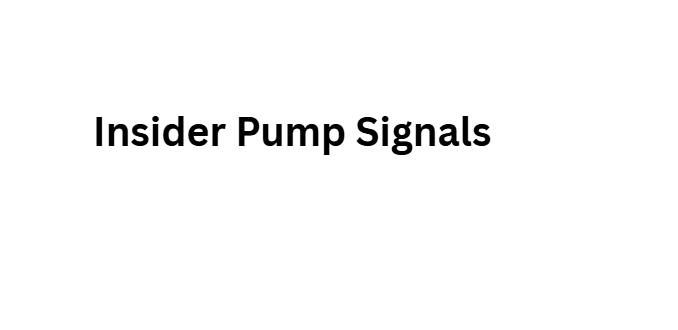In this article, I will discuss what Crypto and Forex Scams to Avoid. While the digital trading world has many opportunities, it also has many risks in the form of phishing, pump-and-dump groups, fake airdrops, and rug pulls.
Knowing these scams will help keep your investments safe, help you protect yourself, and allow you to trade safely in the forex and crypto markets.
Why Use Crypto and Forex Scams to Avoid
Safeguard Your Finances: Identifying scams can help you save money.
Increase Your Security Consciousness: Having knowledge about scams makes you more vigilant about potentially harmful sites or offers.
Choose Wisely: Having knowledge related to scams aids in making a decision about money exchanges, brokers and approaches, and knowing what to invest in.
Steer Clear of Crime: Identifying many scams that are criminal offenses can help you avoid criminal liability.
Prevent Effort Burnout: Identifying scams will help you in not wasting effort on unworthy projects and scams.
Establish Trust Again: Understanding scams lets you develop a more secure, assured trading pattern.
Key Point & Crypto and Forex Scams to Avoid
| Scam Type | Key Point |
|---|---|
| Phishing Attacks | Fraudulent emails/websites trick you into revealing keys, passwords or 2FA codes. |
| Deepfake Trading Bots | AI-generated voices/videos impersonate experts or create fake performance to lure deposits. |
| Pump-and-Dump Groups | Coordinated hype inflates an asset’s price, then organizers sell, leaving others with losses. |
| Fake Airdrops | Scammers promise free tokens to collect private keys, seed phrases, or KYC data. |
| Unregulated Brokers | Brokers with no proper licensing can manipulate prices, stop withdrawals, or vanish. |
| Smart Contract Exploits | Bugs or malicious code in contracts allow attackers to drain funds or alter logic. |
| Ponzi Yield Platforms | Promise unsustainably high returns and pay old investors with new investors’ funds. |
| Clone Exchanges | Lookalike websites mimic real exchanges to harvest login credentials and funds. |
| Fake Trading Apps | Malicious or spoofed apps simulate balances/trades and steal deposits or credentials. |
| Insider Pump Signals | Alleged “inside” tips are used by leaders to buy before signaling the group, then sell. |
| Social Media Impersonators | Fake profiles of influencers/CEOs push scams or malicious links to followers. |
| Rug Pulls | Project creators abandon the project and withdraw liquidity after attracting investors. |
| Forex Account Managers | Unverified managers may misappropriate funds, provide false reports, or engage in churning. |
1. Phishing Attacks
Phishing attacks are one of the most common crypto and forex scams to avoid. Scammers use fake emails, websites, or messages that appear legitimate to trick users into revealing private keys, passwords, or two-factor authentication codes.

These attacks can come in the form of fake wallet notifications, bogus exchange updates, or fraudulent login portals.
Once credentials are stolen, scammers can instantly drain funds. Always verify URLs, enable strong 2FA, and never share sensitive information. Awareness of phishing attacks is crucial for traders and investors to ensure their digital assets remain secure from cyber theft.
Phishing Attacks Features
- Deceptive Communication: Scammers send fake emails, websites, or messages mimicking legitimate exchanges or wallets.
- Credential Theft: Designed to steal private keys, passwords, or 2FA codes.
- Immediate Fund Loss: Once credentials are obtained, attackers can instantly drain crypto or forex accounts.
2. Deepfake Trading Bots
Deepfake trading bots are also high-tech crypto and forex scams to avoid. Scammers using AI-generated videos or voices impersonate trading gurus and convince people to funnel money into bogus trading platforms or automated bots.

The bots display fake performance charts, testimonials, and manipulated results to appear legitimate. A lot of money gets lost before the scam gets realized. The deepfake lure scam users into sophisticated fraudulent systems, so always verify any trading bots’ credentials and cross-performance metrics to be safe.
Deepfake Trading Bots Features
- AI-Generated Impersonation: Uses deepfake videos or voices to simulate credible trading experts.
- Fake Performance Reports: Displays fabricated trading results to lure deposits.
- Automated Fund Theft: Once users invest, the bot can manipulate or steal funds without notice.
3. Pump-and-Dump Groups
Pump-and-dump groups are quite possibly the most well-known organized scams in the crypto and forex scams to avoid category. Scammers coordinate to buy a low-value asset then whip up the hype to artificially inflate the price using social media, chat groups, and forums.

Once the price has been artificially inflated, the organizers quickly sell their holdings, leaving the other, unsuspecting investors with massive losses. They exploit the investors’ greed and FOMO to execute their scheme.
To avoid being the victim of these scams, investors should be cautious of sudden price spikes, avoid unverified tip sources, and prioritize long-term, well-researched investments, rather than just speculative short-term trends.
Pump-and-Dump Groups Features
- Coordinated Hype: Groups artificially inflate asset prices via social media or chat forums.
- Manipulated Selling: Organizers sell at peak prices, leaving others with losses.
- Short-Term Volatility: Creates sudden spikes in price that lure uninformed investors.
4. Fake Airdrops
Another common scam in crypto and forex involves fake airdrops. These scams offer free tokens or rewards and ultimately attempt to capture users’ private keys, KYC, or other personal information. Once users provide sensitive information, scammers unlock wallets, access accounts, and drain funds.

This kind of scam can be presented via social media, phishing emails, or fake websites. Legitimate airdrops will never request passwords or private keys. Confirming airdrop announcements directly with official partnerships is your safest bet. Fake airdrops can put your digital funds at risk, and knowing this gives you the best chance of avoiding access loss.
Fake Airdrops Features
- False Rewards: Promise free tokens to attract users.
- Data Theft: Collects sensitive information, KYC details, or private keys.
- No Legitimate Return: Users never receive actual tokens, resulting in asset loss.
5. Unregulated Brokers
Unregulated brokers also pose a potential risk, and thus are included in the scams to avoid in crypto and forex category. These brokers lack the proper licensing to legally trade making clients susceptible to manipulation and fraud, as well as making withdrawals illiquid.

There are brokers that will give misleading quotes, trade on clients’ accounts at will, or simply vanish with clients’ money. These can also be brokers that fall outside the jurisdiction of the government. Scams like this can be prevented with background checks, controls, and appropriate licensing.
Unregulated Brokers Features
- No Licensing: Financial authorities do not regulate their activities.
- Market Manipulation: Adjust spreads, prices, and trade execution strategies.
- Withdrawal Risk: Withhold or postpone funds and withdrawal requests, and disappear completely.
6. Smart Contract Exploits
Addressing smart contract exploits is critical due to the impact it causes on crypto and forex scams to avoid. Malicious actors take advantage of vulnerabilities and bugs within decentralized finance (DeFi) smart contracts to drain finances and take over the control of contracts.

Exploits occur even in projects that are well funded and have undergone audits, and investors are affected if they engage with contracts that are coded poorly or have no audit trail.
To avoid this, always verify audits, avoid contracts with ridiculous promises, and check what the community has to say. For crypto investors, understanding smart contract exploits is critical – it will save them a lot of money on poorly coded contracts and fraudulent protocols.
Smart Contract Exploits Features
- Code Vulnerabilities: Unsecured bugs or loopholes can be exploited.
- DeFi Fund Drains: Illegally drain funds from or substantially alter decentralized finance (DeFi) contracts and systems.
- Unrealistic Promises: Exploits target systems with promised returns that are too good to be true.
7. Ponzi Yield Platforms
Yield Ponzi schemes are classic crypto and forex scams to avoid. They promise returns that are too good to be true and use money from new investors to pay back unreliable returns to old investors.

They will stop being profitable and paying returns once new investments come in, leaving the majority of investors with crappy returns. They are very common with high-yield crypto projects, DeFi protocols, and staking platforms.
The best way to avoid Ponzi schemes is to critically assess and investigate the fundamentals of projects behind returns that are too good to be true and avoid opaque platforms. Prevention of losses and exposure to fraudulent activities is guaranteed through the knowledge of Ponzi yield platforms.
Ponzi Yield Platforms Features
- Unsustainable Returns: Entice new users with the promise of ridiculously high returns that are virtually impossible to achieve.
- Paying Old Investors: Redistribute the new users funds to the earlier participants (scaled Ponzi scheme).
- Inevitable Collapse: To expand the scheme, massive new investments have to be made. When this slows down, the scheme collapses, and massive losses occur.
8. Clone Exchanges
Clone exchanges are fraudulent websites designed to mimic legit trading platforms. Clone exchanges are part of crypto and forex scams to avoid. Scammers create almost identical interfaces of real exchanges to trick users into providing credentials and deposits. Users are scanned when they provide login credentials and transfer funds.

Clone exchanges are promoted through phishing emails, ads and social media. To avoid being a victim, always check official website URLs, bookmark trusted exchanges, and check platform legitmcy through official channels. Protectoing yourself from clone exchanges is vital to securing your funds.
Clone Exchanges Features
- Identical Interfaces: Create fake exchanges and realistic-looking interfaces to bait unsuspecting users.
- Credential Harvesting: Phish for account credentials (username and password).
- Funds Theft: Scammers steal the funds once they are deposited.
9. Fake Trading Apps
Fake trading apps are among the crypto and forex scams to avoid that deceive users with fraudulent functionality.

These apps may simulate account balances, display fake trades, or generate fake returns to appear authentic. Users deposit funds believing they are investing, but the app eventually blocks withdrawals or disappears.
These apps are often distributed via unofficial app stores or social media promotions. To prevent losses, only download apps from official platforms, verify developer credentials, and cross-check app reviews. Recognizing fake trading apps helps investors avoid falling prey to scams while maintaining the security of their crypto and forex investments.
Fake Trading Apps Features
- Simulated Balances: Generate realistic fake accounts with exaggerated balances and simulate trades.
- Deposit Theft: Theft takes place when users deposit money into the system.
- Unofficial Distribution: Marketed and distributed through unofficial ads and stores.
10. Insider Pump Signals
Insider pump signals are manipulative tactics to be classified under crypto and forex scams to avoid. Some fraudulent groups offer “exclusive insider tips” on imminent asset pumps. However, those tips are usually telegraphed to the clueless marks (i.e. the tips are orchestrated by the scammers themselves) so the scammers can profit off their unsuspecting followers.

Impulse buyers lose their money when they buy the asset just before the orchestrators dump and sell. Self research is the only way to minimize the risk. Knowing how insider pump signals work helps traders identify planned manipulation tactics, and helps them avoid taking reckless positions based on misleading pump tickets, making their investment decisions safer.
Insider Pump Signals Features
- False “Inside” Tips: Purport to have privileged knowledge of price movements and predicted increases (pumps).* Calculated Losses: Followers lose money while the organizers reap the profits.
- FOMO: Invites quick decision-making for investors to buy.
11. Social Media Impersonators
Social media impersonators are the most advanced type of crypto and forex scams to avoid. Scamming of this sort involves creating fake digital personas of influential people like hikers, CEOs, and analysts purely to promote fake investment schemes, airdrops, or trading platforms.

Scammers count on trusting the impersonators so they can collect money and/or sensitive information. Basic scam protection involves checking for official verification, looking for verification badges, and checking the post across platforms for consistency.
Knowledge helps investors avoid reckless, uninformed trading. Social media impersonators are easy to pick and trap scam victims. They help amplify the gap between authentic, professional advice and outright fraudulent schemes, aiding digital asset hoarding.
Social Media Impersonators Features
- Fake Profiles: Mimic social media influencers, CEOs, and analysts.
- Promoting Scam Offers: Encourage fraudulent airdrops and malicious links.
- Trust Abuse: Users fall victim to exploitation with scams tied to recognizable figures.
12. Rug Pulls
Rug pulls are one of the most notorious crypto and forex scams to avoid. In these scams, the developers of a project attract new investors by advertising a new token or DeFi project. Once they have enough investments, they abandon the project and pull the liquidity, leaving the investors stuck with useless tokens.

These kinds of scams are usually seen with DeFi projects or tokens that have just been launched. Investors can mitigate the risk of these scams by performing due diligence, investigating the project team, and analyzing community sentiment with respect to the project.
When trying to understand potential loss of investments, crypto investors must understand the basics of rug pulls and the sudden loss that accompanies fraudulent exit.
Rug Pulls Features
- Liquidity Removal: Sudden withdrawal of project liquidity.
- Debt and Oblivion: Investors are left holding worthless tokens.
- False Advertising: Uses deceptive strategies to reel in unsuspecting investors.
Conclusion
Exploring the crypto and forex markets can be a rewarding experience, but it can expose you to the risks of fraudulent schemes. To protect your investments, you have to know the common crypto and forex scams you can fall victim to, such as phishing, deepfake trading bots, pump-and-dump schemes, fake airdrops, unregulated brokers, and rug pulls.
Perform due diligence, trade on regulated exchanges, set up robust security protocols, and be cynical about “too good to be true” offers. With good knowledge and a calculated approach, you can trade and invest with confidence, and minimize scams, protect your finances, and achieve your goals of long-term economic stability.
FAQ
What are the most common crypto and forex scams to avoid?
The most common scams include phishing attacks, deepfake trading bots, pump-and-dump groups, fake airdrops, unregulated brokers, smart contract exploits, Ponzi yield platforms, clone exchanges, fake trading apps, insider pump signals, social media impersonators, rug pulls, and fraudulent forex account managers.
How can I protect myself from phishing attacks?
Always verify website URLs, avoid clicking on suspicious links, enable two-factor authentication (2FA), and never share private keys or passwords with anyone.
Are unregulated brokers dangerous?
Yes. Unregulated brokers can manipulate trades, delay or deny withdrawals, and may disappear with your funds. Always choose licensed and regulated brokers.








